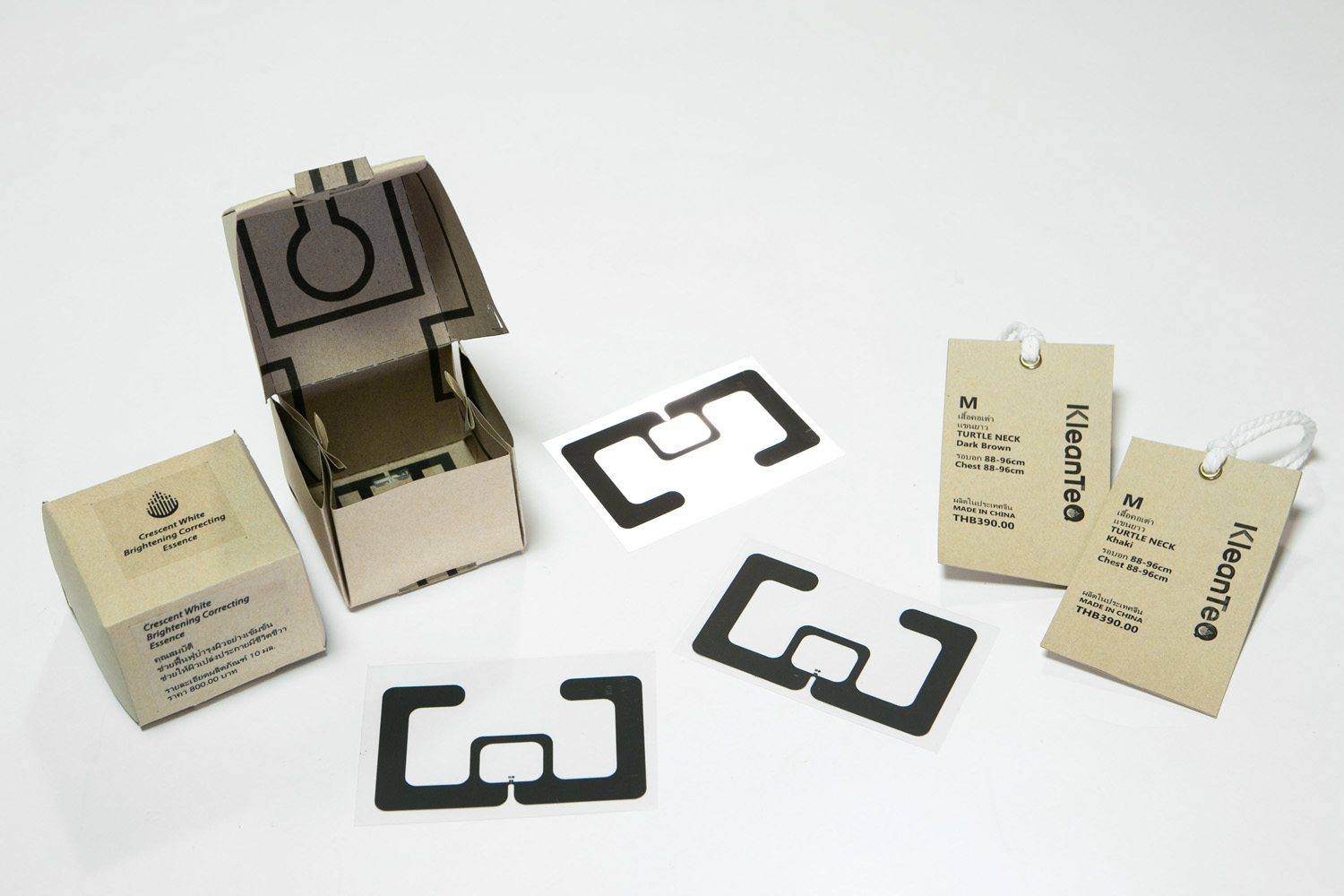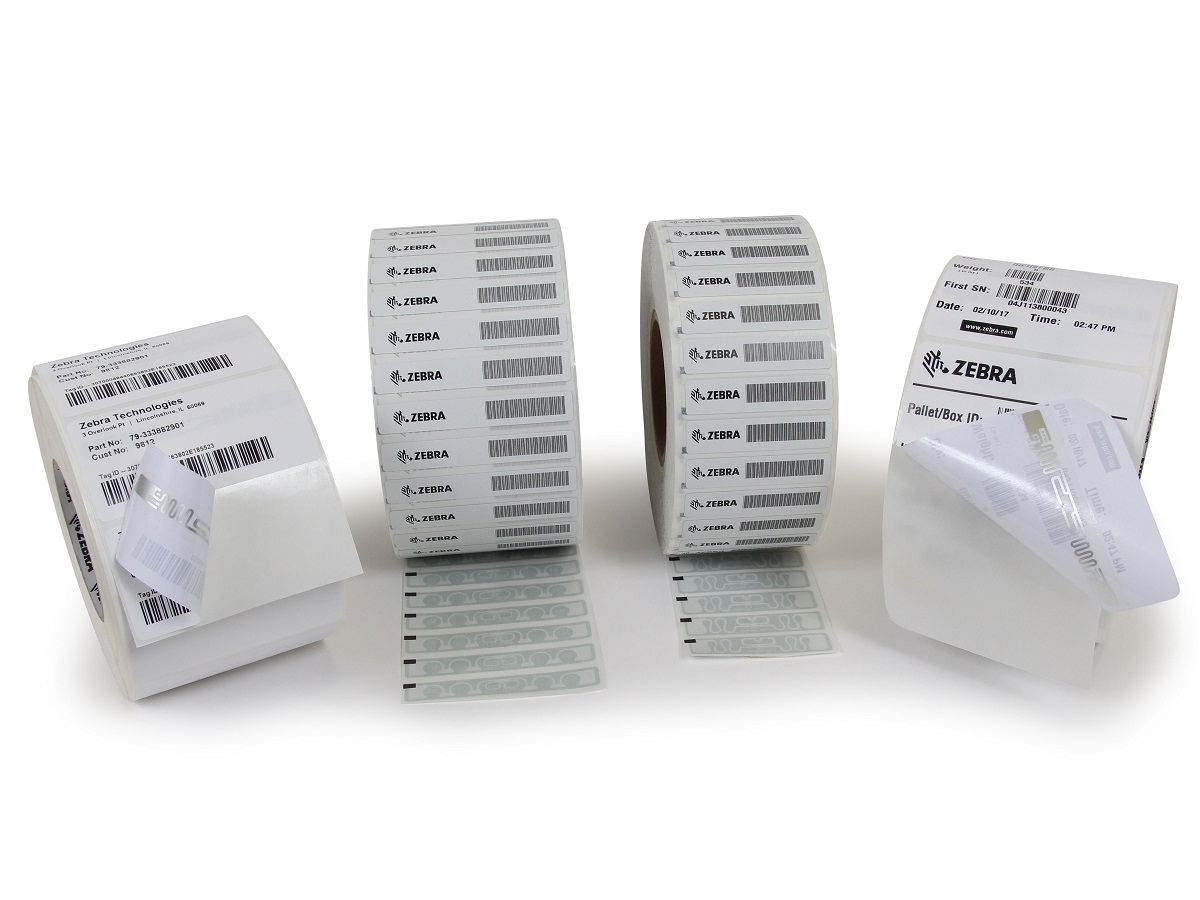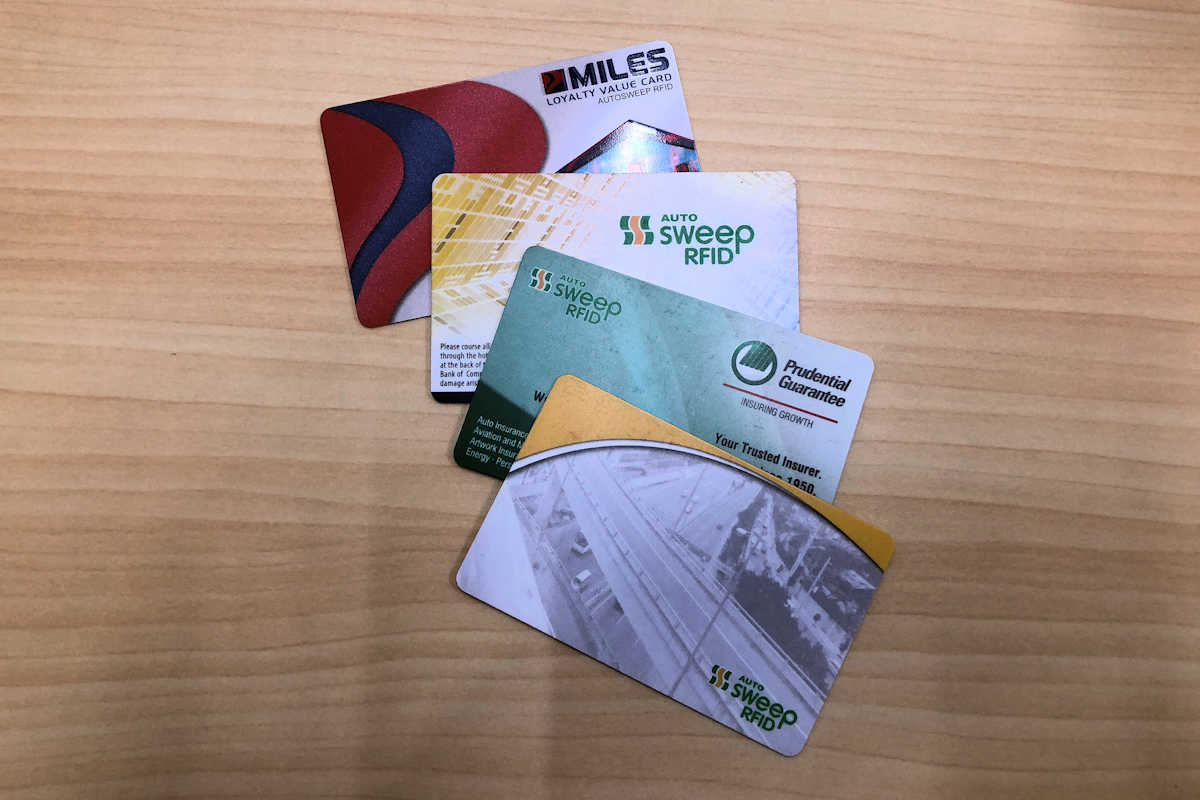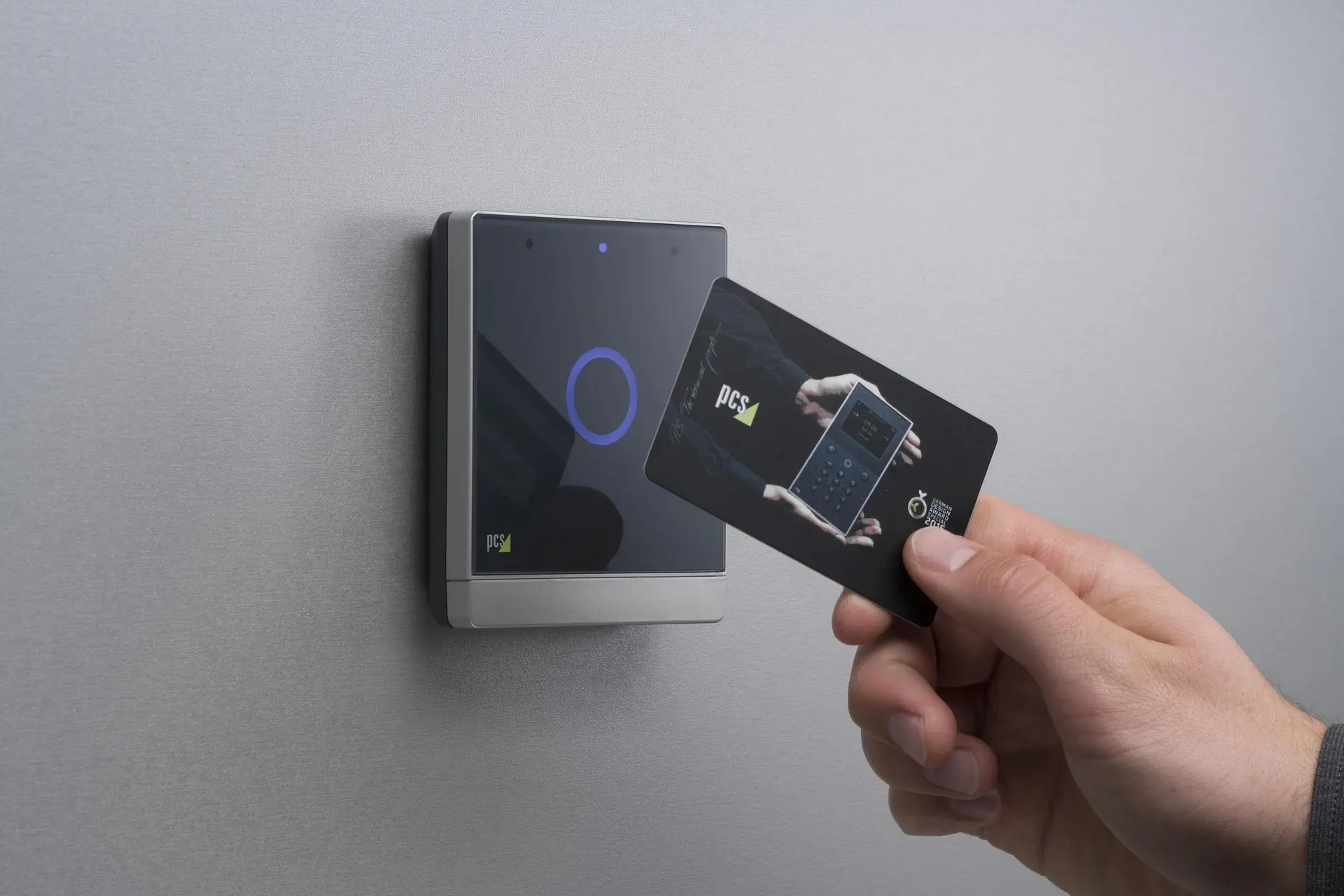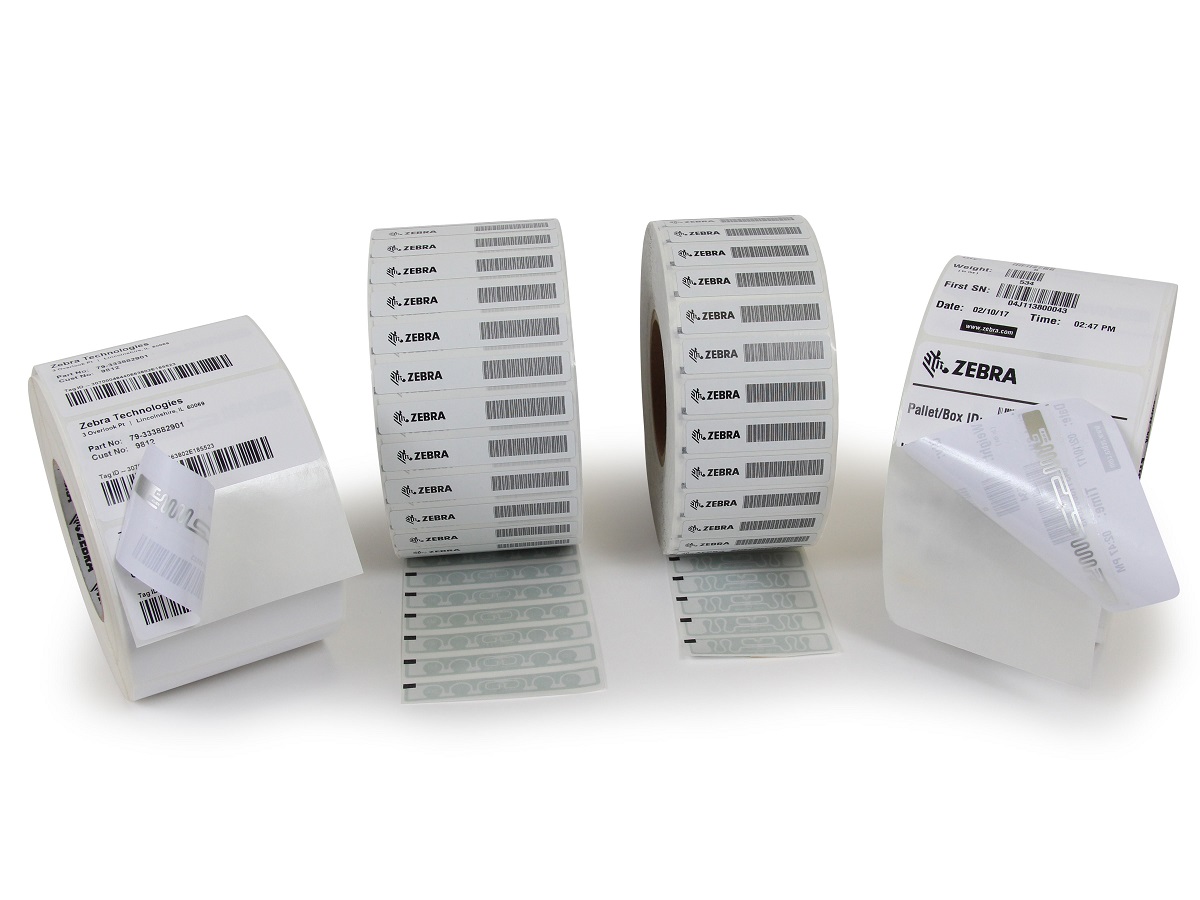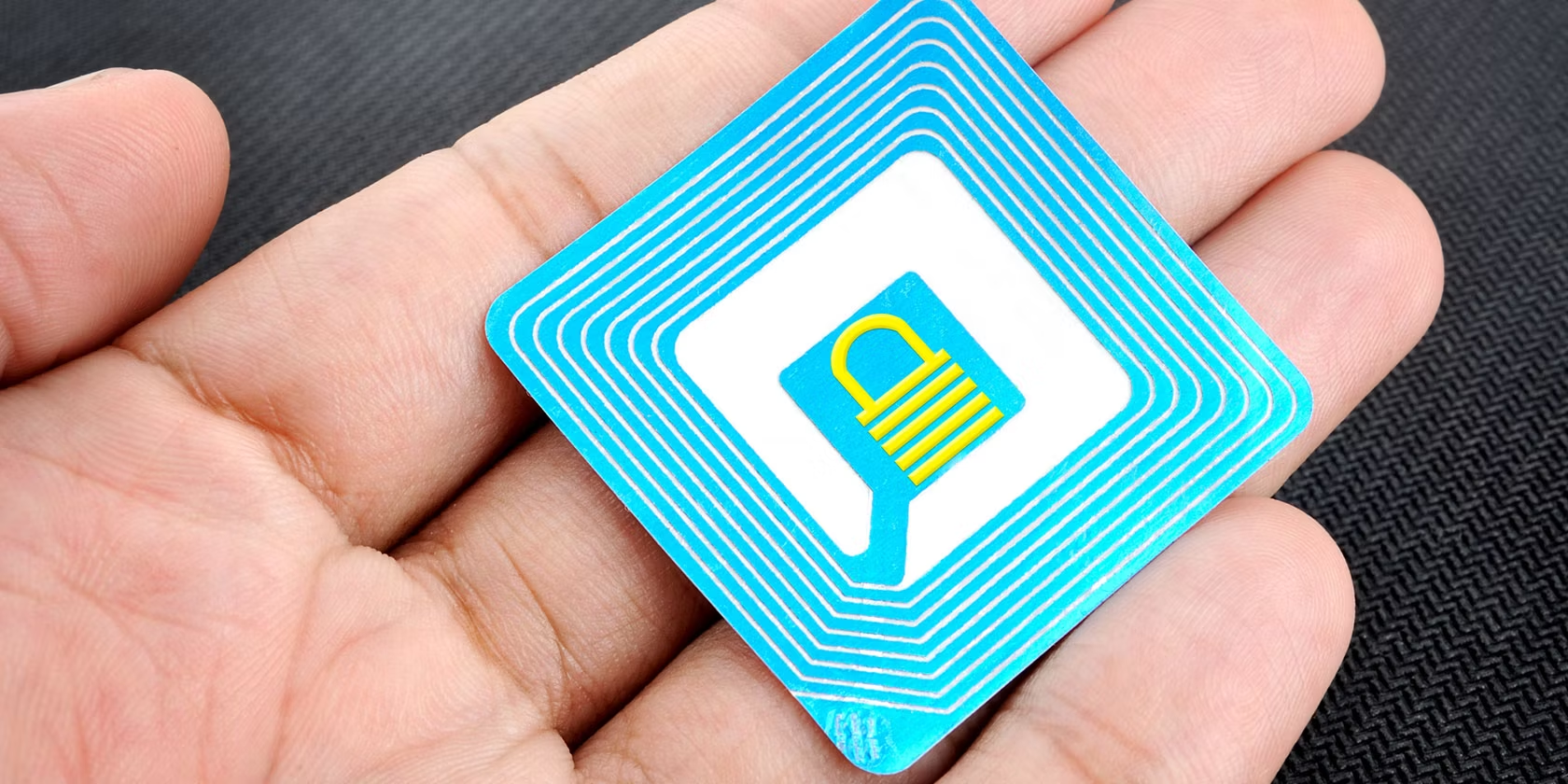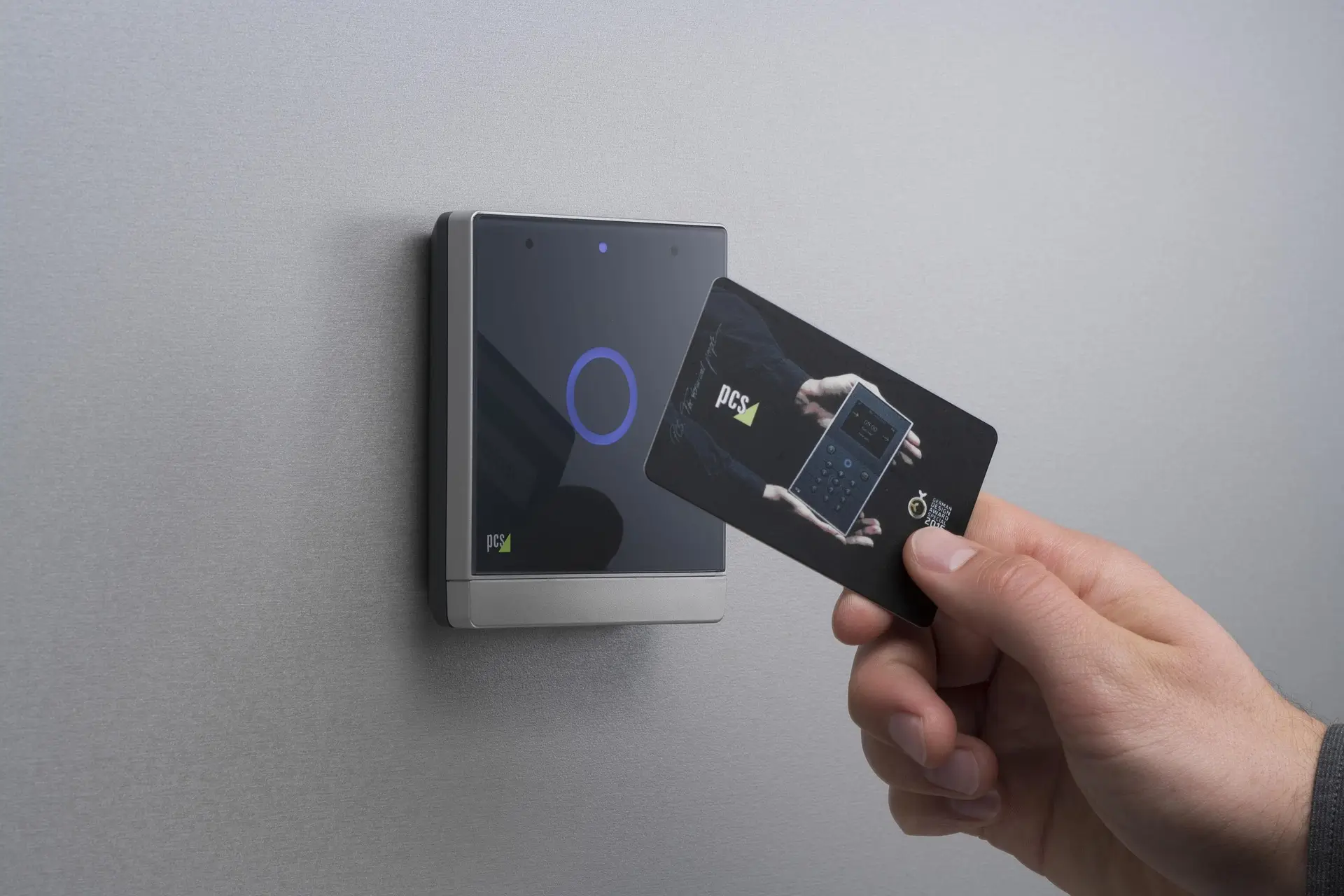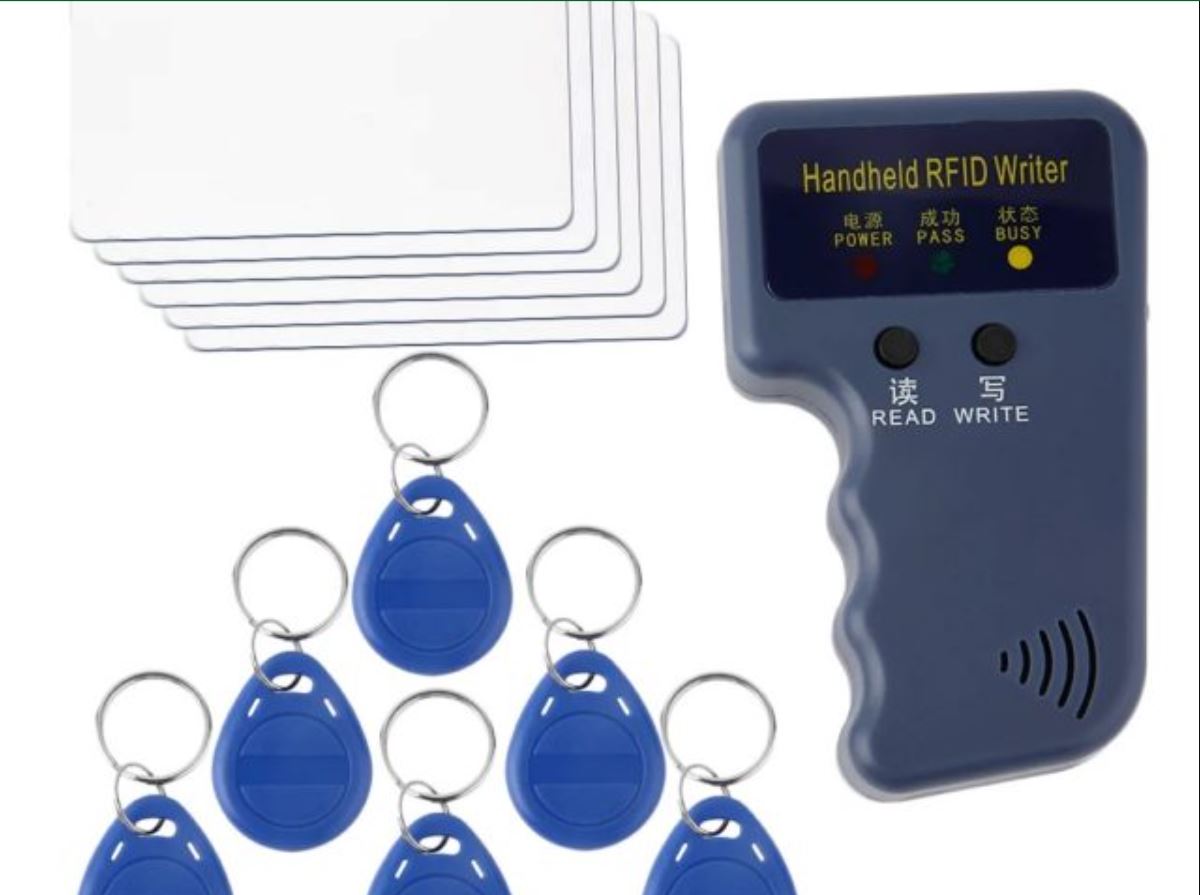Introduction
Welcome to the world of RFID (Radio Frequency Identification)! RFID technology has revolutionized various industries, providing a seamless and efficient way to track and manage assets, inventory, and personnel. RFID tags, the central components of this technology, come in different types and operate at various frequency bands. In this article, we will focus on a specific type of RFID tag that operates at 2.45 GHz.
Before diving into the details of 2.45 GHz RFID tags, let’s briefly understand what RFID is and how it works. RFID refers to a wireless technology that uses radio waves to identify and track objects or individuals. It consists of three main components: the RFID tag, the RFID reader, and the backend system.
The RFID tag, also known as an RFID transponder, is a small chip or a combination of a chip and an antenna. It contains a unique identifier and can store additional data, such as product information or tracking details. The RFID reader emits radio waves and captures the responses from RFID tags within its range. The backend system processes the data collected by the reader, enabling real-time tracking, inventory management, and other valuable applications.
Now, let’s explore the frequency bands used in RFID technology. RFID frequencies are divided into three main bands: low frequency (LF), high frequency (HF), and ultra-high frequency (UHF). Each frequency band has its strengths and weaknesses, making it suitable for different applications.
One particular frequency band that has gained popularity is the 2.45 GHz band. This frequency falls within the UHF range and offers unique advantages for certain RFID applications. In the following sections, we will delve into the workings, benefits, and applications of 2.45 GHz RFID tags, shedding light on their significance in the RFID ecosystem.
What is RFID?
RFID, or Radio Frequency Identification, is a technology that allows for the wireless identification and tracking of objects or individuals. It is often used as an alternative to traditional barcode systems, offering greater convenience and efficiency. RFID systems consist of three primary components: RFID tags, RFID readers, and a backend system.
RFID tags, also known as RFID transponders, are small devices that contain a microchip and an antenna. The microchip stores the unique identifier of the tag, and the antenna allows it to communicate with an RFID reader via radio waves. These tags can come in various forms, including adhesive labels, key fobs, or even implanted devices.
RFID readers, on the other hand, are responsible for reading the information stored on the RFID tags. They consist of an antenna, a transceiver, and a decoder. When an RFID tag comes into range of the reader’s antenna, it uses the radio signal to power on and transmit its unique identifier to the reader. The reader then captures the information and sends it to the backend system for further processing.
The backend system is where the collected data is stored and analyzed. It can be a computer system or a cloud-based platform that manages the RFID infrastructure, communicates with multiple readers, and provides real-time tracking and data management capabilities. By integrating RFID technology into their operations, businesses can achieve enhanced visibility, improved efficiency, and better inventory management.
One of the key advantages of RFID technology is its ability to read multiple tags simultaneously and without line-of-sight. Unlike barcodes, which require each item to be scanned individually, RFID readers can capture data from multiple tags within their range at once. This feature makes RFID particularly suitable for applications that involve tracking and managing a large number of items or assets.
RFID technology is widely used in various industries, including retail, logistics, healthcare, manufacturing, and transportation. It enables businesses to streamline their operations, reduce errors, automate processes, and improve customer service.
Frequency Bands for RFID Tags
RFID technology operates using different frequency bands, each with its own characteristics and applications. The three main frequency bands used in RFID systems are Low Frequency (LF), High Frequency (HF), and Ultra-High Frequency (UHF).
The Low-Frequency (LF) range typically spans from 30 kHz to 300 kHz. LF RFID tags have a shorter read range compared to other frequencies, usually within a few centimeters. They are resistant to interference and can function well in environments with metal or liquid present. LF RFID tags are commonly used for access control, animal tracking, and proximity applications.
The High-Frequency (HF) range operates between 3 MHz and 30 MHz. HF RFID tags offer a longer read range, typically up to one meter. They provide better data transfer speeds and support more advanced security features compared to LF tags. HF RFID technology is commonly used in applications like contactless payment systems, library book tracking, and electronic passports.
The Ultra-High Frequency (UHF) range covers the frequency band from 860 MHz to 960 MHz. UHF RFID tags have a longer read range and can be read from several meters away, making them suitable for applications requiring long-range identification, such as inventory management and supply chain tracking. UHF RFID technology is widely adopted in retail, logistics, and manufacturing industries.
Within the UHF range, there are further subdivisions based on regional regulations. In North America, the UHF frequency is centered at 915 MHz, while in Europe, it is centered at 868 MHz. These regional differences ensure compliance with local radio frequency regulations and enable interoperability between different countries.
Another notable frequency band for RFID is 2.45 GHz, falling within the UHF range. 2.45 GHz RFID tags offer unique advantages and are commonly used in specialized applications, which we will explore in the next section.
When implementing an RFID system, it is crucial to consider the proper frequency band based on the specific requirements of the application. Factors such as read range, interference susceptibility, and regulatory compliance need to be taken into account to ensure optimal performance and reliability.
45 GHz RFID Tags
2.45 GHz RFID tags are a specific type of RFID tag that operates within the ultra-high frequency (UHF) range. These tags utilize the 2.45 GHz frequency to enable wireless communication and identification. While not as widely used as other UHF RFID frequencies, like 868 MHz or 915 MHz, 2.45 GHz RFID tags offer unique advantages for certain applications.
One of the key benefits of 2.45 GHz RFID tags is their ability to provide a higher read range compared to other UHF frequencies. This increased read range can be advantageous in applications where long-range identification is required, such as tracking items in large warehouses or monitoring assets across expansive areas.
2.45 GHz RFID technology also offers better penetration through materials, including liquids and metals, compared to lower frequency RFID tags. This characteristic makes it suitable for applications where tags may be placed on or near items that contain liquids, or where there is a need for tags to be read in the presence of metallic surfaces.
Furthermore, the 2.45 GHz frequency offers a larger available spectrum, resulting in reduced interference from other devices operating in the same frequency range. This helps to ensure more reliable and accurate data capture, especially in environments with high levels of radio frequency interference.
However, it’s important to note that the increased read range and improved penetration capability of 2.45 GHz RFID tags come at the expense of slightly higher power consumption. This means that these tags may require more frequent battery replacement or maintenance compared to lower frequency tags.
2.45 GHz RFID tags are commonly used in various specialized applications. For example, they are often utilized in healthcare settings to track medical equipment, monitor patient movement, or even assist in surgical procedures. The ability of 2.45 GHz RFID tags to penetrate liquids and metal objects makes them suitable for applications such as tracking containers in chemical or pharmaceutical industries.
Despite their advantages, it’s important to carefully consider the specific requirements of the application and conduct thorough testing to determine if 2.45 GHz RFID tags are the most suitable choice. Factors such as read range, environment, interference levels, and power requirements need to be evaluated to ensure optimal performance and reliability.
How do 2.45 GHz RFID Tags Operate?
2.45 GHz RFID tags operate using radio frequency technology to enable wireless communication and identification. These tags consist of a microchip, an antenna, and a power source, typically a battery. Understanding how 2.45 GHz RFID tags operate requires a closer look at the key components and the communication process.
The microchip within the 2.45 GHz RFID tag contains a unique identifier, often referred to as an Electronic Product Code (EPC), along with additional memory to store other relevant data. This identifier serves as a unique digital fingerprint for each tag, allowing for a high level of item-level identification and tracking.
The antenna in the 2.45 GHz RFID tag plays a vital role in establishing communication with the RFID reader. The antenna receives and transmits radio waves, allowing the tag to exchange information with the reader. The design and size of the antenna can impact the read range and performance of the tag.
When a 2.45 GHz RFID tag comes into the proximity of an RFID reader that operates within the same frequency band, the reader emits a radio wave signal. This signal provides the necessary power to activate the tag, allowing it to respond and transmit its unique identifier.
Upon receiving the radio wave signal from the reader, the tag’s antenna captures the energy and powers up the tag’s microchip. Once activated, the microchip processes the received signal and sends a response back to the reader. This response includes the unique identifier stored in the tag’s memory.
The reader detects the response from the tag’s antenna and decodes the information. It then transmits this data to the backend system, where it can be analyzed and utilized for various applications such as inventory management, asset tracking, or authentication.
The communication between 2.45 GHz RFID tags and readers is typically based on the radio frequency identification protocol, which outlines the specific rules and processes for tag-reader interaction. The most commonly used protocol for UHF RFID systems, including 2.45 GHz, is the EPCglobal Gen2 protocol.
It’s important to note that the operating distance and read range of 2.45 GHz RFID tags depend on several factors, including the power output of the reader, the sensitivity of the tag’s antenna, and the environment in which the tags are deployed. These factors need to be taken into consideration when designing and implementing 2.45 GHz RFID systems.
Benefits of 2.45 GHz RFID Tags
2.45 GHz RFID tags offer a range of benefits that make them well-suited for certain applications. These benefits contribute to improved efficiency, enhanced data collection, and increased visibility in various industries. Let’s explore some of the key advantages of using 2.45 GHz RFID tags:
Extended Read Range: One of the significant benefits of 2.45 GHz RFID tags is their extended read range compared to other UHF frequencies. This allows for quick and accurate identification of tagged items without the need for line-of-sight proximity, making it ideal for large-scale asset tracking or inventory management.
Penetration of Materials: 2.45 GHz RFID technology excels in situations where tags need to penetrate materials such as liquids or metals. These tags are capable of reading and transmitting data even when placed on or near objects that may obstruct the radio wave signal. This feature is particularly valuable in industries where tags need to be placed on or near objects that contain liquids or operate in the presence of metallic surfaces.
Reduced Interference: The 2.45 GHz frequency band offers a larger available spectrum, resulting in reduced interference from other devices operating in the same frequency range. This enhances the reliability and accuracy of data capture, even in environments with high levels of radio frequency interference.
Enhanced Data Transfer Speed: 2.45 GHz RFID tags support faster data transfer rates compared to lower frequency RFID tags. This allows for efficient and rapid data exchange between the tags and the RFID reader, enabling real-time tracking and data management. It is especially useful in applications that require quick inventory updates or high-speed data transmission.
Specialized Applications: The unique characteristics of 2.45 GHz RFID tags make them well-suited for specialized applications. In fields such as healthcare or pharmaceuticals, where tags may need to be read through liquids or metal objects, 2.45 GHz RFID technology provides a reliable solution. It is also beneficial in scenarios that require long-range identification or tracking across wide areas.
By leveraging the benefits offered by 2.45 GHz RFID tags, businesses can streamline operations, improve inventory management, enhance supply chain visibility, and enhance overall efficiency. However, it is important to consider the specific requirements and challenges of each application before implementing 2.45 GHz RFID technology to ensure optimal performance and maximize the benefits it offers.
Applications of 2.45 GHz RFID Tags
2.45 GHz RFID tags find applications in various industries where their specific capabilities and advantages are beneficial. Let’s explore some of the key applications where these tags are commonly used:
Healthcare and Medical Equipment Tracking: In the healthcare industry, 2.45 GHz RFID tags are employed to track medical equipment, such as infusion pumps, wheelchairs, or surgical instruments. The ability of these tags to penetrate liquids and metal objects makes them suitable for applications where tags may come into contact with bodily fluids, or when tracking assets in a hospital or medical facility.
Asset Tracking: 2.45 GHz RFID technology is particularly valuable for asset tracking applications that require long-range identification or tracking across large areas. This includes tracking assets in warehouses, construction sites, or transportation and logistics operations. By using 2.45 GHz RFID tags, businesses can improve inventory management, reduce losses, and streamline asset utilization.
Container Tracking: In industries such as shipping, logistics, or chemical manufacturing, 2.45 GHz RFID tags are used to track containers and their contents. The tags’ ability to read through liquids and metal surfaces allows for reliable tracking and identification even in challenging environments. This helps streamline supply chain management, improve security, and prevent counterfeit products or unauthorized access.
Personnel Tracking and Access Control: 2.45 GHz RFID tags can be utilized for personnel tracking and access control in secured areas. These tags can be embedded in employee ID badges or wearable devices to monitor movement, track attendance, and provide access to restricted areas. The extended read range of 2.45 GHz tags is beneficial in scenarios where simultaneous identification and tracking of numerous individuals are required, such as in large office buildings or event venues.
Industrial Automation: 2.45 GHz RFID tags are valuable in industrial automation applications, such as manufacturing or assembly lines. These tags can be attached to products or components, allowing for seamless identification and tracking throughout the production process. The ability of 2.45 GHz RFID tags to withstand challenging environments and read through liquids or metal surfaces makes them suitable for reliable and efficient automation systems.
These are just a few examples of the many applications where 2.45 GHz RFID tags can be effectively deployed. The versatility, extended read range, and penetration capabilities of these tags make them well-suited for specialized use cases that require reliable and efficient identification, tracking, and data management.
Comparison with Other RFID Frequencies
When considering RFID technology, it’s important to understand the differences between various RFID frequency bands. Here, we will compare 2.45 GHz RFID tags with tags operating at other frequency bands, highlighting their unique characteristics and applications:
Read Range: While 2.45 GHz RFID tags offer an extended read range, they may have shorter read ranges compared to lower frequency tags, such as LF or HF. Lower frequency tags tend to have read ranges within a few centimeters, making them suitable for proximity applications. On the other hand, 2.45 GHz tags can achieve read ranges of several meters, enabling long-range identification and tracking.
Penetration Capability: In terms of penetration, 2.45 GHz RFID tags have an advantage over lower frequency tags. They can penetrate materials like liquids and metals more effectively, enabling reliable reading even in challenging environments. Lower frequency tags, particularly LF tags, have better penetration capabilities than higher frequency tags like HF or UHF.
Interference: 2.45 GHz RFID tags operate in a frequency band where other electronic devices, such as Wi-Fi routers or microwaves, also transmit signals. This can result in potential interference between these devices. Lower frequency tags, especially LF tags, are less susceptible to interference as they operate in a lower frequency range with less congestion from other devices.
Data Transfer Speed: 2.45 GHz RFID tags support faster data transfer rates compared to lower frequency tags. This enables efficient communication and high-speed data exchange between the tags and readers. Lower frequency tags have slower data transfer rates, limiting the speed at which data can be captured and processed.
Applications: The choice of RFID frequency depends on the specific application requirements. For close-proximity applications and environments with liquids or metals, lower frequency tags (LF and HF) are better suited. 2.45 GHz RFID tags are advantageous in applications that require long-range identification, penetration through materials, or the ability to read multiple tags simultaneously. UHF tags, including 2.45 GHz, are commonly used in supply chain management, asset tracking, and logistics.
Ultimately, the selection of RFID frequency depends on factors such as read range, penetration capability, interference levels, data transfer speed, and the specific use case. It’s essential to evaluate these factors and understand the requirements of the application to choose the most suitable RFID frequency band.
Conclusion
2.45 GHz RFID tags offer unique advantages and capabilities that make them well-suited for specific applications. Their extended read range, penetration capability through materials, reduced interference, and faster data transfer speed make them valuable in industries such as healthcare, asset tracking, container tracking, personnel tracking, and industrial automation.
However, it is crucial to consider the specific requirements of the application when selecting RFID tags. Factors such as read range, environment, interference levels, and power requirements should be taken into account to ensure optimal system performance and reliability.
The comparison with other RFID frequencies has highlighted the trade-offs between different bands. While 2.45 GHz tags have the advantage of extended read range and penetration capability, lower frequency tags offer benefits like better penetration through materials, reduced interference, and suitability for proximity applications.
In summary, 2.45 GHz RFID tags provide a reliable and efficient solution for applications that require long-range identification, penetration through materials, or simultaneous reading of multiple tags. By leveraging their capabilities, businesses can enhance visibility, improve inventory management, streamline operations, and achieve greater efficiency in various industries.
When implementing an RFID system, it is important to evaluate the specific needs of the application and choose the RFID technology that best aligns with those requirements. With their unique advantages, 2.45 GHz RFID tags offer a compelling solution for specific use cases where their benefits can be fully realized.







